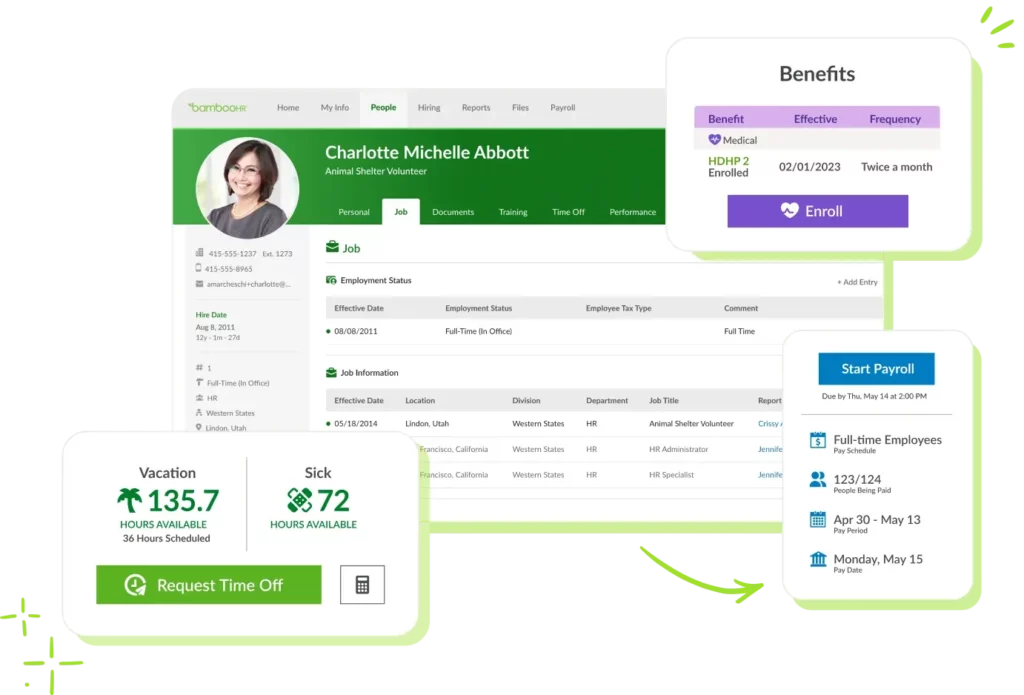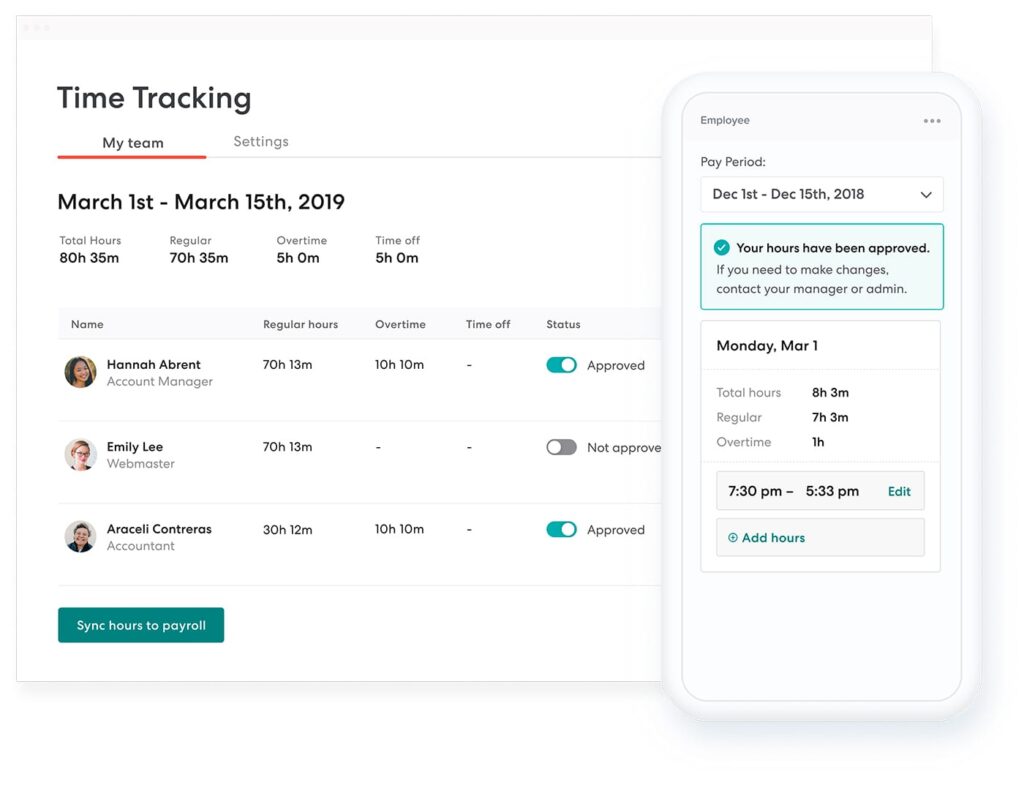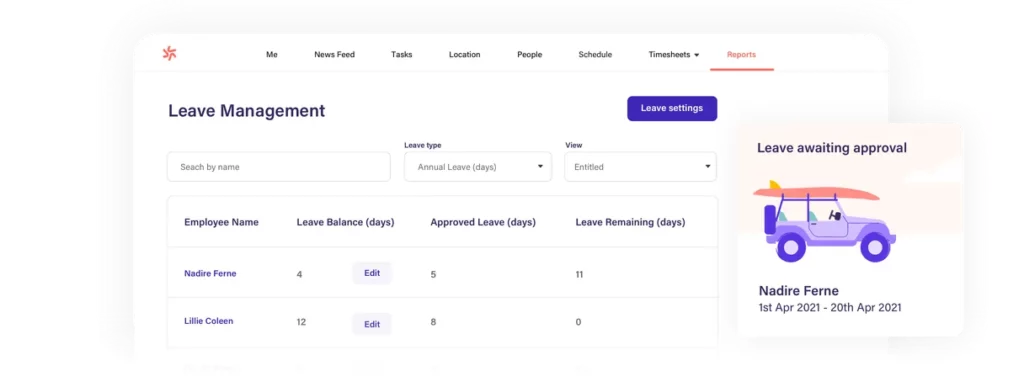Table of Contents
ToggleFostering a positive company culture is essential for attracting and retaining top talent. One often overlooked but incredibly impactful aspect of this is how a company manages its employees’ leave and time off. Transparent leave management is not just about keeping track of days off—it’s about building trust, promoting fairness, and enhancing overall employee satisfaction. In this article, we’ll explore how transparent leave management can profoundly impact company culture and why it’s a critical component of a successful organization.
Building Trust Through Transparency
Trust is the cornerstone of any healthy workplace culture. Employees want to feel confident that they are being treated fairly, and one of the most effective ways to build this trust is through transparent leave management.
A. Clarity in Leave Policies
Transparent leave management starts with clear, well-communicated leave policies. When employees understand how leave is accrued, the process for requesting time off, and any limitations on when leave can be taken, they are less likely to feel confused or frustrated. This clarity helps build trust, as employees know that the rules apply equally to everyone and that their requests will be handled consistently and fairly.
B. Open Communication
Encouraging open communication about leave availability and scheduling also builds trust. When employees can see who else is scheduled to be off, they can better plan their own time off without worrying about potential conflicts. Additionally, managers who communicate openly about the reasons for approving or denying leave requests demonstrate transparency, further reinforcing trust within the team.
Promoting Fairness and Equity
Fairness is a critical component of workplace satisfaction, and it plays a significant role in shaping company culture. Transparent leave management ensures that all employees have equal access to their earned time off and that leave policies are applied consistently across the organization.
A. Consistent Application of Policies
When leave management is transparent, employees can see that policies are applied consistently, regardless of their position, tenure, or relationship with their manager. This consistency helps prevent feelings of favoritism or unfair treatment, which can erode morale and lead to resentment within the team.
B. Equal Opportunities for Time Off
Transparent systems also ensure that all employees have an equal opportunity to take time off, especially during popular vacation periods. By making the leave process visible to all, companies can avoid situations where certain employees always seem to get their preferred dates while others are left to pick from what’s left. This equitable approach promotes a sense of fairness and camaraderie among team members.
Enhancing Employee Satisfaction and Well-being
Employee satisfaction is closely linked to their overall well-being, which is heavily influenced by how they are able to balance work and personal life. Transparent leave management plays a key role in ensuring that employees can take the time they need to recharge and maintain a healthy work-life balance.
A. Empowering Employees
When employees have access to a clear and transparent leave management system, they feel empowered to take charge of their time off. Knowing exactly how much leave they have accrued and being able to request it without unnecessary hurdles reduces stress and anxiety. This empowerment leads to higher satisfaction and better mental health, as employees can plan their time off with confidence.
B. Encouraging Time Off
Transparent leave management also encourages employees to take their time off, rather than letting it go unused. When leave policies and balances are easily accessible, employees are more likely to use their vacation days, which is crucial for avoiding burnout. Companies that promote a culture of taking time off demonstrate that they value their employees’ well-being, which in turn fosters loyalty and long-term commitment.
Improving Productivity and Reducing Burnout
Transparent leave management doesn’t just benefit employees—it also positively impacts the organization as a whole. When employees take their entitled time off and return to work refreshed, they are more productive and less likely to experience burnout.
A. Managing Workload Distribution
A transparent system allows managers to plan more effectively by seeing who is scheduled to be off and when. This visibility helps in distributing workloads more evenly, ensuring that no one is overwhelmed when others are on leave. Proper planning also allows for temporary adjustments, such as bringing in temporary staff or redistributing tasks, to maintain productivity.
B. Reducing Absenteeism
When employees are encouraged to take their planned leave, they are less likely to need unplanned absences due to stress or illness. Transparent leave management helps reduce the frequency of unscheduled absences, as employees can take time off before reaching a point of exhaustion. This proactive approach leads to a healthier, more engaged workforce.
Fostering a Positive Workplace Culture
Ultimately, transparent leave management is a reflection of a company’s broader commitment to transparency, fairness, and employee well-being. These values are the foundation of a positive workplace culture, where employees feel respected, valued, and motivated to contribute their best work.
A. Aligning Company Values with Practice
For companies that prioritize transparency and fairness as core values, transparent leave management is a tangible way to demonstrate these principles in action. When employees see that the company practices what it preaches, it reinforces their belief in the organization’s mission and values, leading to stronger alignment and engagement.
B. Strengthening Team Relationships
Transparent leave policies can also strengthen team relationships. When everyone has a clear understanding of how leave is managed, there’s less room for misunderstandings or conflicts over time off. This clarity fosters a collaborative environment where team members support each other’s needs for rest and rejuvenation, further enhancing the overall culture.
Implementing Transparent Leave Management: Best Practices
To fully realize the benefits of transparent leave management, companies should consider the following best practices:
A. Utilize Technology
Leverage vacation tracking software that offers visibility into leave balances, requests, and approvals. Such software can automate the leave management process, making it easier for both employees and managers to stay informed.
B. Communicate Clearly
Ensure that leave policies are clearly documented and accessible to all employees. Regularly communicate any updates or changes to these policies to prevent confusion.
C. Provide Training
Offer training sessions for managers and employees on how to use the leave management system effectively. This training should cover not just the technical aspects, but also the importance of fairness and transparency in the process.
D. Monitor and Adjust
Regularly review your leave management practices to ensure they continue to meet the needs of your employees and align with your company’s values. Be open to feedback and willing to make adjustments as needed.
Best Transparent Leave Management Software
Choosing the right leave management software is crucial for ensuring transparency, efficiency, and employee satisfaction in your organization. There are numerous options available, each offering unique features tailored to different business needs. Below, we highlight some of the best leave management software solutions, with Day Off leading the list for its user-friendly interface and robust features.
Day Off is a leading leave management software designed to simplify the entire process of managing employee time off. It is especially popular among small to medium-sized businesses due to its ease of use and comprehensive feature set.
User-Friendly Interface: Day Off is known for its intuitive and clean interface, making it easy for both employees and managers to navigate. The platform provides a straightforward way to request, approve, and track leave, reducing the likelihood of errors and misunderstandings.
Customizable Leave Policies: With Day Off, businesses can customize leave policies to align with their specific needs. Whether you offer traditional vacation days, sick leave, or more flexible PTO (Paid Time Off) options, Day Off can accommodate various types of leave and ensure compliance with company policies.
Real-Time Tracking and Notifications: Employees can view their leave balances in real-time, while managers receive instant notifications when a leave request is submitted. This transparency ensures that all parties are aware of the current leave status, reducing the risk of overlapping or conflicting schedules.
Integration Capabilities: Day Off integrates seamlessly with Google Calendar, Outlook Calendar, Slack and Microssoft Teams.
Mobile Accessibility: With a dedicated mobile app, Day Off allows employees to manage their leave on the go. Whether they are in the office or working remotely, employees can easily submit requests and check their leave status from their smartphones.

BambooHR is a comprehensive HR software solution that includes powerful leave management capabilities. It’s designed to help growing companies manage their human resources more effectively, with a focus on simplicity and ease of use.
Integrated HR Suite: BambooHR offers an all-in-one HR platform where leave management is integrated with other HR functions such as employee records, performance management, and onboarding. This integration helps ensure that leave data is consistent across all HR processes.
Automated Workflows: The leave management feature in BambooHR automates the entire process of requesting, approving, and tracking time off, reducing the time and effort required by HR teams.
Custom Reports: BambooHR provides robust reporting capabilities, allowing managers to generate custom reports on leave patterns, usage trends, and more. These insights help businesses make informed decisions about workforce planning and resource allocation.
Employee Self-Service: Employees can easily log in to BambooHR to check their leave balances, request time off, and view their leave history. This transparency fosters trust and ensures that employees are always informed about their leave status.
3. Gusto

Gusto is a versatile HR platform that offers a variety of tools for managing employee benefits, payroll, and time off. It’s particularly well-suited for small to medium-sized businesses looking for a user-friendly and cost-effective solution.
Time-Off Tracking: Gusto simplifies leave management with its time-off tracking features, allowing employees to request leave through a self-service portal. Managers can approve requests with just a few clicks, and the system automatically updates leave balances.
Payroll Integration: Gusto’s leave management system integrates seamlessly with its payroll services, ensuring that any approved time off is accurately reflected in employee paychecks. This integration reduces the risk of payroll errors and streamlines the entire HR process.
Compliance Management: Gusto helps businesses stay compliant with state and federal leave laws by automatically applying the correct leave policies based on the employee’s location. This feature is particularly beneficial for businesses with remote or multi-state workforces.
Employee-Friendly: Gusto is designed with the user in mind, offering an intuitive interface that both employees and managers find easy to use. Employees can access their leave information, make requests, and check approvals all in one place.
4. Deputy

Deputy is a workforce management solution that excels in scheduling and leave management. It’s ideal for businesses in industries like retail, healthcare, and hospitality, where shift planning and leave coordination are critical.
Advanced Scheduling Tools: Deputy’s leave management features are tightly integrated with its scheduling tools, making it easy to plan shifts around employee availability. This integration helps avoid understaffing and ensures that all shifts are covered, even during peak vacation periods.
Leave Visibility: With Deputy, managers have full visibility into who is on leave at any given time, which aids in better resource planning and ensures that customer service levels are maintained.
Compliance Features: Deputy includes built-in compliance tools that help businesses adhere to labor laws and regulations related to time off, such as ensuring that employees receive their legally mandated breaks and leave.
Mobile Access: Like Day Off, Deputy also offers a mobile app, allowing employees to manage their leave requests from anywhere. This feature is particularly useful for businesses with a mobile or distributed workforce.
FAQ: Frequently Asked Questions About Leave Management Software
1. Can leave management software integrate with existing HR and payroll systems?
Yes, most modern leave management software solutions offer integration capabilities with existing HR and payroll systems. Integration ensures that leave data is automatically updated across all systems, reducing the need for manual entry and minimizing errors. This integration can also help streamline processes like payroll calculations, ensuring that employees are paid correctly for their time off.
2. How secure is leave management software in protecting employee data?
Security is a top priority for leave management software providers. These platforms typically employ advanced encryption technologies, secure login protocols, and regular security updates to protect sensitive employee data. Additionally, many software providers comply with international data protection regulations such as GDPR (General Data Protection Regulation), ensuring that your company’s data is handled with the utmost care.
3. Can employees access their leave information remotely?
Yes, many leave management software platforms, such as Day Off and Deputy, offer mobile apps or web portals that allow employees to access their leave information from anywhere. This remote access is especially beneficial for companies with remote or mobile workforces, enabling employees to request time off, check leave balances, and view approvals on the go.
4. How does leave management software handle different types of leave (e.g., vacation, sick leave, maternity leave)?
Leave management software is designed to handle a variety of leave types, including vacation, sick leave, maternity/paternity leave, unpaid leave, and more. Most platforms allow you to customize leave types according to your company’s specific policies. Employees can select the appropriate type of leave when making a request, and the software will track and manage each type accordingly, ensuring compliance with company policies and legal requirements.
5. What happens if multiple employees request leave for the same period?
Leave management software typically includes features that help managers handle overlapping leave requests. For example, the software might notify managers of potential conflicts or allow them to view the team’s overall availability before approving or denying requests. Some systems also offer rules or guidelines that can be set up to automatically prioritize leave requests based on seniority, department needs, or other criteria.
6. Is it possible to customize the leave approval workflow?
Yes, most leave management software allows you to customize the approval workflow to suit your organization’s hierarchy and processes. For instance, you can set up multi-level approvals where leave requests are reviewed by both a direct manager and an HR representative. Customizable workflows help ensure that leave approvals align with your company’s operational structure and specific needs.
7. How can leave management software support compliance with labor laws?
Leave management software can help ensure compliance with local, state, and federal labor laws by automatically applying the correct leave policies based on an employee’s location. This includes ensuring that employees receive their legally mandated time off, such as sick leave or family leave, and that leave accruals are calculated correctly. The software can also generate reports that demonstrate compliance during audits or legal reviews.
8. Can leave management software generate reports on leave trends and usage?
Yes, one of the key benefits of leave management software is its ability to generate detailed reports on leave trends, usage patterns, and employee availability. These reports can help HR and management teams make informed decisions about workforce planning, identify patterns of absenteeism, and understand how leave policies are being utilized across the organization.
9. How does leave management software handle leave accruals and carryovers?
Leave management software typically includes features for managing leave accruals and carryovers according to your company’s policies. You can set up the system to automatically accrue leave based on hours worked, tenure, or other criteria. Additionally, the software can handle carryover rules, such as capping the amount of leave that can be carried over to the next year or setting expiration dates for unused leave.
10. What kind of support is available if there are issues with the leave management software?
Most leave management software providers offer a range of support options, including online help centers, customer support hotlines, live chat, and email support. Some also provide dedicated account managers or technical support teams to assist with setup, integration, and ongoing maintenance. Additionally, many platforms offer training resources, such as webinars or tutorials, to help your team get the most out of the software.
Conclusion
Selecting the right leave management software is a critical decision that can have a significant impact on your company’s efficiency, compliance, and overall employee satisfaction. Day Off stands out for its user-friendly design and comprehensive features, making it a top choice for businesses seeking to streamline their leave management processes. However, other solutions like BambooHR, Gusto, and Deputy, also offer powerful tools that cater to different business needs. By choosing the software that best aligns with your company’s requirements, you can ensure that your leave management is handled transparently, efficiently, and in a way that supports a positive company culture.
